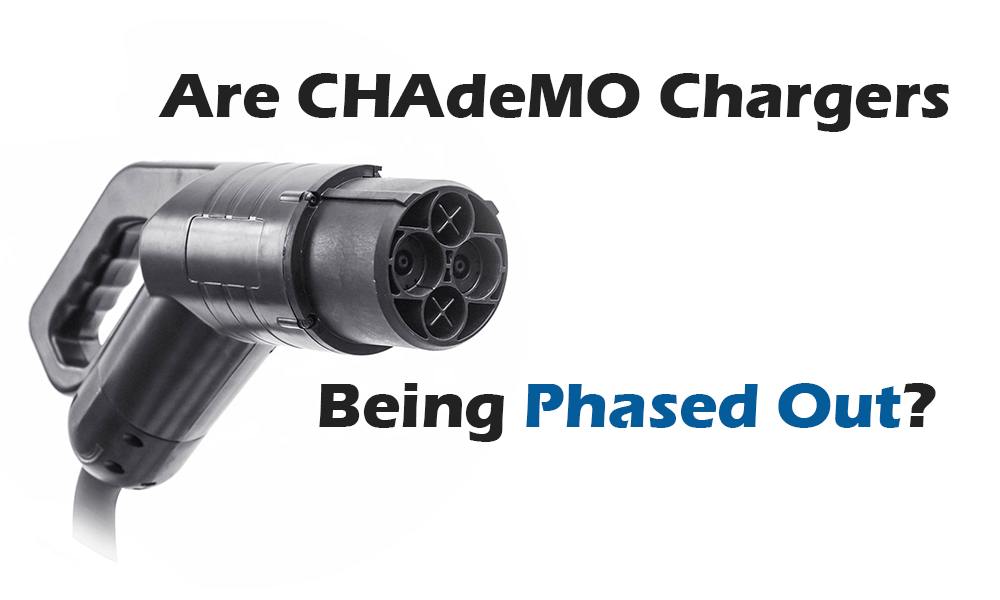- All
- Product Name
- Product Keyword
- Product Model
- Product Summary
- Product Description
- Multi Field Search
Views: 0 Author: Site Editor Publish Time: 2025-10-24 Origin: Site

CHAdeMO is a DC fast-charging standard developed by the CHAdeMO Association around 2010. It was widely used in Japan, Europe, and parts of North America—most notably in early EVs such as the Nissan Leaf.
However, as the global EV industry pushes toward unified and high-power charging standards, CHAdeMO’s relevance is declining in several key markets. This article breaks down where CHAdeMO stands today, what’s replacing it, and what EV charging station buyers and installers should consider.
Electrify America officially stopped installing new CHAdeMO connectors (except in California) from January 2022 onward.
By early 2021, CHAdeMO usage had dropped to under 10% of total DC fast-charging sessions.
New EVs in the U.S. — including Nissan’s latest models — are switching to CCS or NACS connectors.
In Europe, the CHAdeMO share in new charging sites has fallen below 5% as of 2024.
Most major operators now build CCS-only or CCS + NACS compatible stations.
Countries such as Germany and France have already set CCS2 as the regulatory default connector for DC chargers.
CHAdeMO remains prevalent in Japan (explained in Section 7), but other Asian countries are gradually adopting CCS2 or GB/T for new installations.
Summary:
CHAdeMO isn’t instantly disappearing — but it’s being slowly phased out in North America and Europe in favor of CCS and NACS.
| Reason | Explanation |
|---|---|
| Declining OEM support | Automakers like Nissan, Kia, and Mitsubishi have shifted to CCS or NACS for future models. |
| Lower utilization rate | Networks report CHAdeMO usage under 10%, making maintenance uneconomical. |
| Desire for standardization | Governments and networks prefer CCS/NACS to simplify infrastructure and ensure interoperability. |
| Power limitations | Although CHAdeMO 2.0 supports up to 400 kW, most public units operate at 50 kW, limiting competitiveness. |
| Emergence of ChaoJi | The next-generation “CHAdeMO 3.0 / ChaoJi” offers higher power but hasn’t yet achieved large-scale rollout. |
| Area | Recommendation | Details |
|---|---|---|
| New projects | Focus on CCS / NACS instead of CHAdeMO | Future-proof your installations for new EV models. |
| Existing customers | Maintain compatibility for legacy EVs (e.g., old Nissan Leaf) | Offer CHAdeMO + CCS dual-interface options. |
| Hardware design | Choose modular DC charger systems | Ensure ports can be upgraded or swapped later. |
| Marketing | Emphasize “future-ready charging” | Educate clients about evolving connector trends. |
| Retrofit strategy | When replacing CHAdeMO ports, upgrade to CCS/NACS modules | Several major networks have adopted this policy since 2023. |
A quick checklist for EV fleet owners, property developers, and charging investors:
✅ Check the EV models you’ll support — CHAdeMO, CCS, or NACS?
✅ Review regional network coverage for CHAdeMO vs CCS.
✅ Choose chargers with interchangeable connector modules.
✅ Confirm your OCPP platform supports multi-standard operation.
✅ Ask your supplier (e.g., EVTAURUS) about future upgrade paths.
✅ Create a long-term plan to replace or phase out CHAdeMO-only stations.
Unlike in the West, Japan still maintains a large CHAdeMO network with over 7,000 fast-charging points nationwide.
Key factors include:
Long-term dominance of Nissan Leaf and Mitsubishi PHEV models.
Government and utility companies’ investments in maintaining CHAdeMO infrastructure.
Local incentive programs that continue to subsidize upgrades or replacements of CHAdeMO chargers.
Japan is co-developing the ChaoJi standard with China, representing the next evolution of CHAdeMO technology.
| Feature | ChaoJi (CHAdeMO 3.0) |
|---|---|
| Maximum Power | Up to 900 kW DC |
| Cooling | Liquid-cooled connector |
| Compatibility | Backward compatible with CHAdeMO |
| Target Vehicles | Heavy-duty trucks, buses, high-capacity EVs |
| Key Developers | TEPCO (Japan) and China Electric Power Research Institute |
The ChaoJi connector is designed to reduce size and weight while increasing current capacity, enabling the next generation of high-power EV charging for both passenger and commercial vehicles.
CHAdeMO will likely remain operational until at least 2030 due to infrastructure inertia.
ChaoJi is expected to gradually replace CHAdeMO as new stations are built.
Charger manufacturers targeting Japan should consider dual CHAdeMO/ChaoJi modules to ensure compatibility.
| Manufacturer Strategy | Rationale |
|---|---|
| Keep CHAdeMO option for Japanese exports | CHAdeMO is still required by many site owners in Japan. |
| Invest in ChaoJi-capable hardware | Prepares for Japan + Asia next-generation charging projects. |
| Offer hybrid (CHAdeMO + CCS or CHAdeMO + ChaoJi) systems | Maximizes flexibility and market reach. |
Globally, CHAdeMO is being phased out, but in Japan and select Asian regions, it continues to thrive and evolve into ChaoJi.
For international charging solution providers like EVTAURUS, the optimal approach is multi-standard readiness — offering products that support CCS, NACS, and ChaoJi to serve both legacy and future markets.
Copyright © 2023 Nanjing Jiutai Information Technology Co., Ltd. All rights reserved. | Sitemap | Privacy Policy | Supported by leadong.com